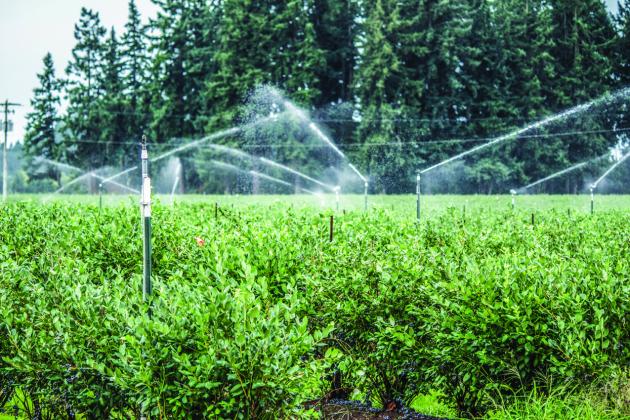By Grantly Ricketts:
Central Florida experiences most of its annual rain between June 1 and Sept. 30.
Water is a very important component for good plant health, but for most people it is very difficult to find a balance. Too little water is bad, so is too much water. I recommend that plants should only be irrigated in early morning before 10 a.m. and not in the late evenings. I am aware that we cannot control when rain will fall, which can make it a little difficult for plant health. When watering, only wet the soil where the roots are located and avoid wetting the leaves of the plant. Wet leaves will encourage foliar diseases. For disease to survive, the pathogen that will cause the disease must be present, the environment such as wet leaves must be conducive, and there must be a host plant that is susceptible to a specific disease. Leaving wet plant leaves overnight is perfect for disease development.
At the UF/IFAS Extension/Osceola County office, we receive many samples of unhealthy plants each year. Most of these samples of diseased plants show signs of root rot diseases in many cases. Overwatering contributes to root rot diseases. Root rot affects a wide range of plants including turfgrasses, roses, liriope, marigolds, verbenas, hollies, box woods, azaleas and rhododendrons. The problem with root rot is that the symptoms often cause plants to wilt, leaves become yellow, growth is stunted, and people naturally think the problem is lack of water. They apply water and the problem becomes worse. One thing to keep in mind is that plant diseases, such as take all root rot, pythium and rhizoctonia, are very aggressive pathogens that thrive in wet soil. Foliar leaf spot is also a major issue that is triggered by prolonged leaf wetness.
Another key to minimize the occurrence of root rot is to carefully check new plants before introducing them to the landscape. Take one or two plants out of a flat of bedding plants and observe the roots. Roots should be white or silvery, if they are dark, soft or sparse, then the plant is probably infected with a root rot-causing pathogen. Avoid introducing sick plants into the landscape.
Diseases are not the only negative impact of overwatering. Overwatering and excess rainfall over a short period causes leaching of fertilizer and pesticides through the soil profile down into the underground water. Leaching is bad in that it causes non-point source pollution to our water resources. Soil erosion and nutrient runoff are also results of excess watering. During the rainy season do not fertilize the lawn if rain is in forecast within 24 hours. Excess rainfall will move fertilizer off site leading to pollution.
For more information on lawn and landscape related topics, contact Grantly Ricketts with UF/IFAS Extension in Osceola County at 321-697-3000 or email gricketts@ufl.edu.




